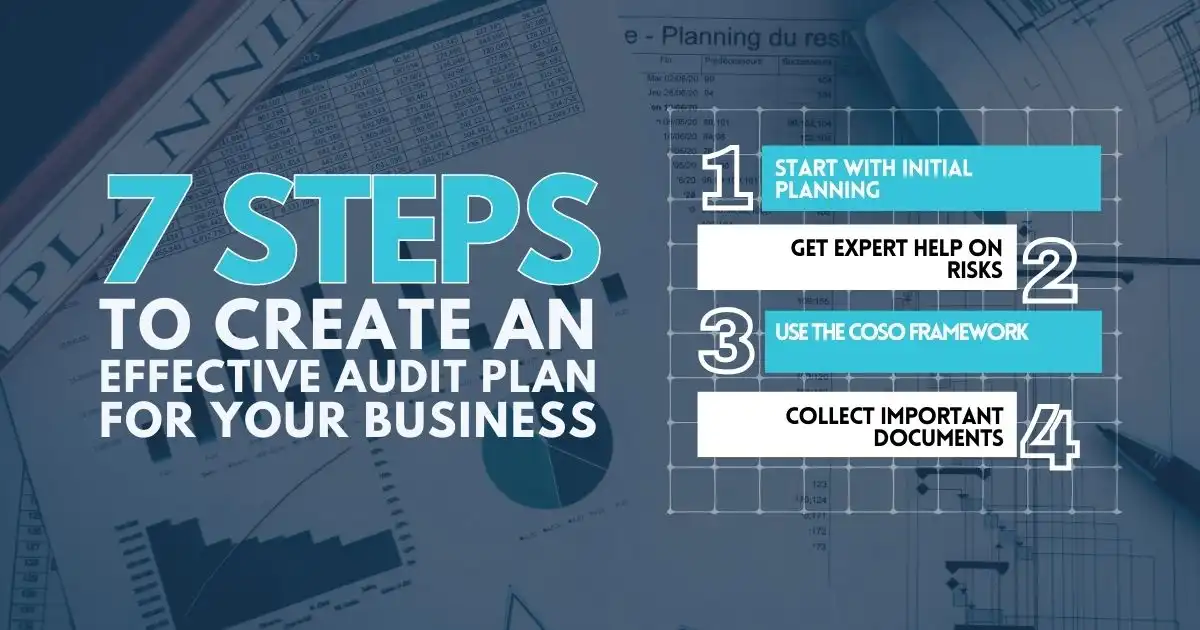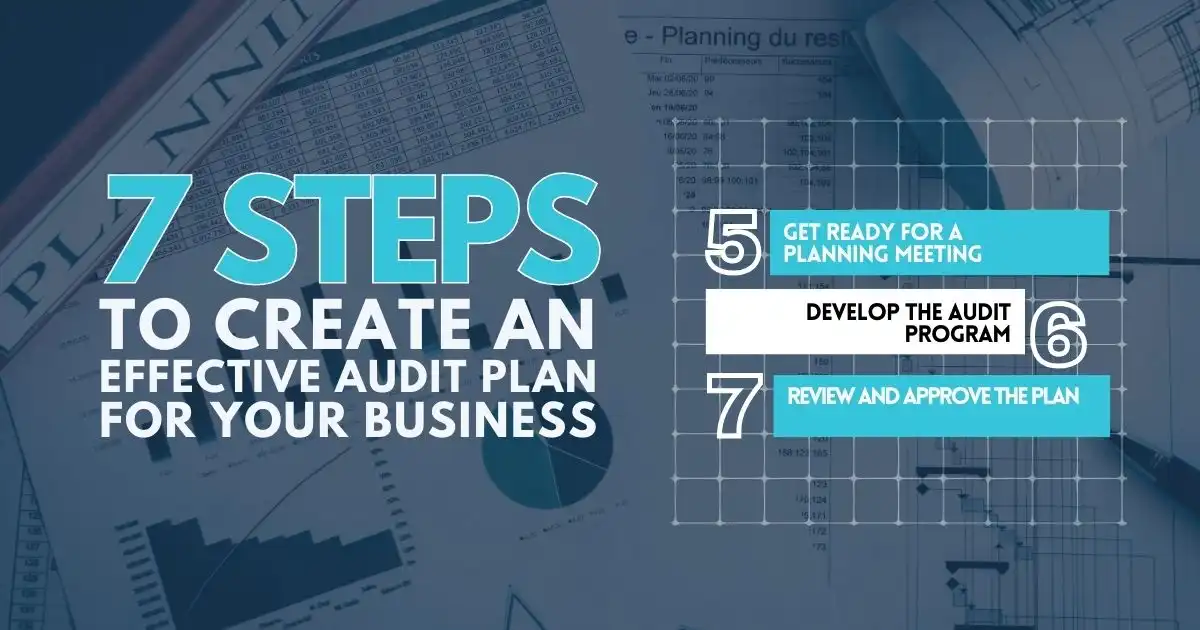As rules keep changing, businesses need to update their audit plans to keep up. In the past, audits focused mainly on checking controls, but now they focus more on identifying risks, thanks to new technology and changing market conditions.
A survey by PricewaterhouseCoopers (PwC) in 2023 found that inflation and unstable economies are the biggest worries for business leaders. However, nearly half of the companies do not include these risks in their audit plans.
Creating a good audit plan is important to address big issues like inflation, economic changes, and cybersecurity. To keep up with these trends, businesses must include strategies in their audits that focus on these major risks.
By aligning their audit activities with top concerns, companies can better handle unexpected problems and stay strong in managing risks.
What is an Audit Plan?
An audit plan is a detailed guide for checking a company’s processes, focusing on specific areas like financial records and compliance with regulations. It outlines what will be reviewed, how it will be done, and who will be involved.
The main purpose is to spot risks, such as financial errors or inefficiencies, and ensure the company follows the rules. A well-planned audit also improves communication among everyone involved, making the process smooth and clear. With a solid audit plan, businesses can regularly assess their performance and address issues to improve over time.
7 Steps to Create an Effective Audit Plan for Your Business
Here are seven easy steps to help you build an audit plan:

Step 1. Start with Initial Planning
Before you begin an audit, it’s important to understand why this project was chosen. Ask questions like:
- Why is this audit needed?
- How does it help the company’s goals?
- What risks are being checked?
- Was this process audited before, and what were the results?
- Have there been any changes since the last audit?
Step 2. Get Expert Help on Risks
To better understand the process, use both internal knowledge and outside experts. You might want to consult:
- A Subject Matter Expert (SME) from a consulting firm
- Industry associations
- Recent articles or guidance from top business sources like the Institute of Internal Auditors
Step 3. Use the COSO Framework
Follow the COSO 2013 Internal Control Framework to guide your audit. This helps you check not just the main control activities but all parts of a well-managed process.
Step 4. Collect Important Documents
Gather primary documents before you start planning, such as:
- Policies and procedures
- Organization charts
- Important reports that measure how well the process is working
Look at the data used in the process to find any trends and pick good samples for testing.

Step 5. Get Ready for a Planning Meeting
Hold an internal meeting with your audit team to discuss the process. Then, prepare a simple plan with flowcharts or notes to share with business stakeholders. Create a questionnaire with some basic questions to help understand the process better.
Step 6. Develop the Audit Program
Create an audit program with the following details:
- Goals of the process
- Main risks involved
- Controls in place to manage these risks
Decide how often controls are checked (daily, weekly, etc.), and test them by asking questions, observing, and reviewing documents.
Step 7. Review and Approve the Plan
Before starting, have the audit plan reviewed by:
- Internal Audit Manager
- Subject Matter Expert
- Chief Audit Executive
Get feedback from the main contact person for the audit to make sure everything is clear.
What Makes a Good Audit Plan?
A good audit plan helps a company check if everything is working well and meeting the rules. It looks for problems, checks the controls in place, and suggests ways to improve. Here’s how to make one:
- Set Clear Goals – Start by deciding what you want to achieve with the audit. This helps you know what areas to check and how to assess them.
- Collect Important Information – Gather details about the process you are auditing. This means looking at company policies, talking to staff, checking financial records, and analyzing data.
- Make a Risk Assessment Matrix – Create a list that ranks different parts of the process based on their risk levels. This helps you focus on the most important areas.
- Develop a Testing Plan – Plan out how you will check each area. Make sure your tests cover all the risks you found.
- Share Your Findings – Present your results clearly to senior management so they can take action based on your recommendations.
Turning Audit Plans Into Strategic Tools for Success
An audit plan is more than just a list—it’s a tool to protect your business. It helps you find problems before they happen, like inflation or cybersecurity risks. If your audit plan doesn’t cover these big issues, you might miss important signs of trouble.
To make your audit plan work, start by understanding what your business needs and the risks you face. Use both internal knowledge and expert advice to see what could go wrong. Once you know the risks, create a plan that checks every part of your business to make sure everything is running smoothly.
Don’t wait for problems to catch you off guard. Build an audit plan that’s ready to handle whatever comes your way. This way, you can stay ahead, keep things running well, and grow your business with confidence.
FAQs
What is the audit strategy?
The audit strategy is a plan that outlines the approach an auditor will take to review an organization’s processes, identify risks, and ensure compliance. It guides the overall direction of the audit and focuses on how the audit will be conducted efficiently and effectively.
What is the audit program?
An audit program is a detailed document that breaks down the audit process into specific tasks. It outlines the areas to be audited, the methodology to be used, and how the audit will be performed to meet the set objectives. It helps auditors ensure that they cover all necessary aspects and follow a clear path in the audit.
How should auditors design the written audit plan?
Auditors should design the written audit plan so that it includes the scope, objectives, and procedures for the audit. The plan should clearly define the areas to be audited, assess risks, and outline the resources required to complete the audit effectively. The goal is to ensure that the audit is structured and comprehensive.
What are the analytical procedures used in planning an audit?
The analytical procedures used in planning an audit should focus on understanding the business, identifying areas of potential risk, and gathering information that helps auditors assess the organization’s financial health. These procedures include comparing financial data, trends, and ratios to identify any unusual or concerning patterns that require further investigation.
